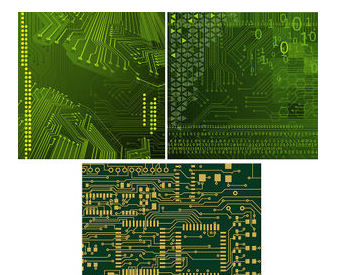Printed circuit board (PCB) is a substrate for assembling electronic parts. It is a printed board that connects points and prints components on a common base material according to a predetermined design. According to different classification methods, printed circuit boards can be divided into different types. According to the number of layers, printed circuit boards can be divided into single-sided boards (SSB), double-sided boards (DSB) and multilayer boards (MLB); according to flexibility, printed circuit boards can be divided into rigid printed circuit boards (RPC) and flexible (Also called flexible) printed circuit board (FPC) and rigid-flex printed circuit board.
In recent years, due to the adjustment of industrial structure in developed regions in Europe and America and the cost advantage of Asia, global PCB manufacturing has gradually shifted from Europe and America to Asia, especially the mainland of China. Since the end of the 1990s, China's printed circuit board output value has developed rapidly, becoming the fastest growing region in the world's PCB output value.
In 2017, there were more than 1,300 PCB companies in mainland China (a decrease from the previous period). The market presents a highly fragmented competition pattern. The scale of companies is generally small and there is no certain leading company.

According to the statistics published by the "Printed Circuit Board (PCB) Industry Market In-depth Research and Investment Prospect Analysis Report 2018-2023" published by the New Thinking Industry Research Center, China's PCB output value in 2017 was 26.997 billion U.S. dollars, accounting for 50% of the global output value. %above.
The PCB industry has a consistent big cycle with the global economy. In the past two years, the industry has been affected by the global economic and computer sales downturn, and the PCB industry's prosperity has been at a low level. Since the first half of 2016, the global economy has returned to an upward trend, the semiconductor cycle has been on the rise, and the PCB industry has shown signs of recovery. At the same time, the prices of bulk commodities such as copper foil and fiberglass cloth, which are the main costs of the industry, have experienced a sharp decline in the past year, and their prices are still falling, which has ushered in a larger bargaining space for PCB companies. And the large-scale investment in domestic 4G has become a catalyst that drives the industry's prosperity beyond expectations.
With the large-scale PCB manufacturers from all over the world investing and building factories in China, the technical level of domestic PCB is improving day by day, but the high-end PCB production technology still has a gap with Europe, America and Japan. At present, most of the main raw materials required for PCB production can be produced in China, but some production equipment with high automation, precision and reliability requirements, such as electroplating production lines, laser drilling machines, etc., mainly rely on foreign imports. In the future, the research and development of high-end PCB production technology will become the new development focus of domestic PCB manufacturers.
Researchers from Xinsijie industry believe that PCB technology is closely related to the technological development trend of mainstream products in the downstream industry. At present, electronic products are updated very quickly, with higher and higher technical content and stricter quality requirements. For example, mobile phone consumers hope Mobile phones are getting thinner and lighter. Therefore, downstream customers' technical requirements for PCB products are gradually increasing. PCB manufacturers need to continuously update their manufacturing processes and manufacturing technologies to meet the technical requirements of downstream customers for the continuous improvement of their products.